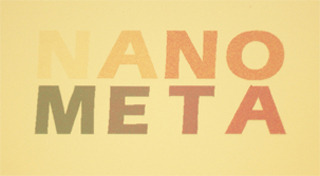While gold in its natural state exhibits a distinctive gold color, metallurgists are able to create colored gold by alloying the gold with other elements. For instance, the addition of silver will color gold white, and the addition of copper will color it red.
Now, physicists at the University of Southampton in England are taking a whole new approach to colored metals by altering the way the human eye perceives the color.

By applying various hues to a basic image in Photoshop, we are able to simulate a scientific breakthrough that may affect the way we see gold jewelry in the future.
Described as "sand blasting on the atomic scale," this breakthrough surface patterning technique embosses tiny raised or indented patterns on the metal’s surface, which alters the way it absorbs or reflects light. The surface patterns are just 100 nanometers (.0001 millimeters) across.

Viewed through a microscope, we can see the various shades of gold that were created by altering the shape, height and depth of the embossed patterns. The surrounding surface is unstructured and therefore has the normal color of gold.
"This is the first time the visible color of metal has been changed in this way," professor Nikolay Zheludev, a specialist in nanophotonics, told Wired.co.uk. "The colors of the objects we see all around us are determined by the way light interacts with those objects. For instance, an object that reflects red light but absorbs other wavelengths will appear red to the human eye."
The shape, height and depth of the embossed patterns determines how light behaves when it hits the metal and therefore what color is created, according to the professor.
Zheludev told the journal Optics Express that the new nano-etching technique could be rolled out for commercial jewelry production and is effective in altering the way we see the color of gold, silver or aluminum.
Are purple gold and orange silver in our future? Only time will tell...
No comments:
Post a Comment